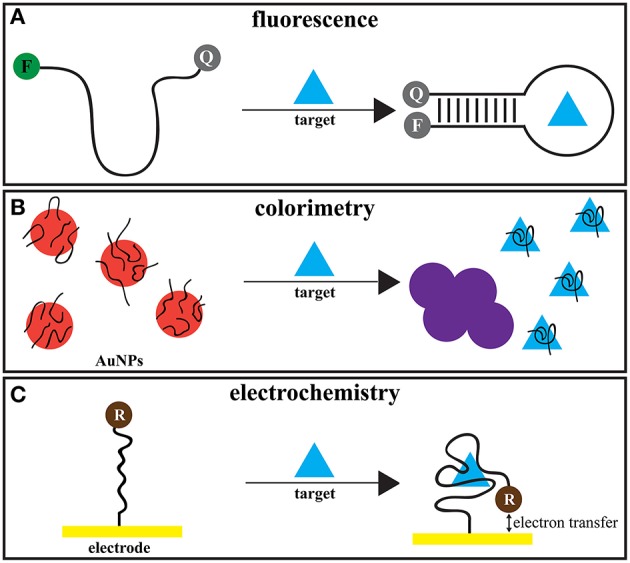Figure 1.

Small molecule aptasensor types. Depicted is an example for a sensor for the three most widely used types for small molecule targets. F, fluorophore. Q, quencher. AuNPs, gold nanoparticles. R, redox probe. (A) The aptamer is labeled with a fluorophore and an appropriate quencher. Upon binding to the target, the conformational change of the aptamer brings fluorophore and quencher into close contact, thereby quenching the fluorescence. (B) The aptamer is unspecifically absorbed onto the surface of AuNPs and thus prevents their aggregation. Upon binding to the target, the AuNPs aggregate. This leads to a visible color change from red to blue. (C) The aptamer is immobilized onto an electrode and labeled with a redox probe. The conformational change upon target binding brings the probe close enough to the electrode to allow electron transfer and thus, an electrochemical readout.
